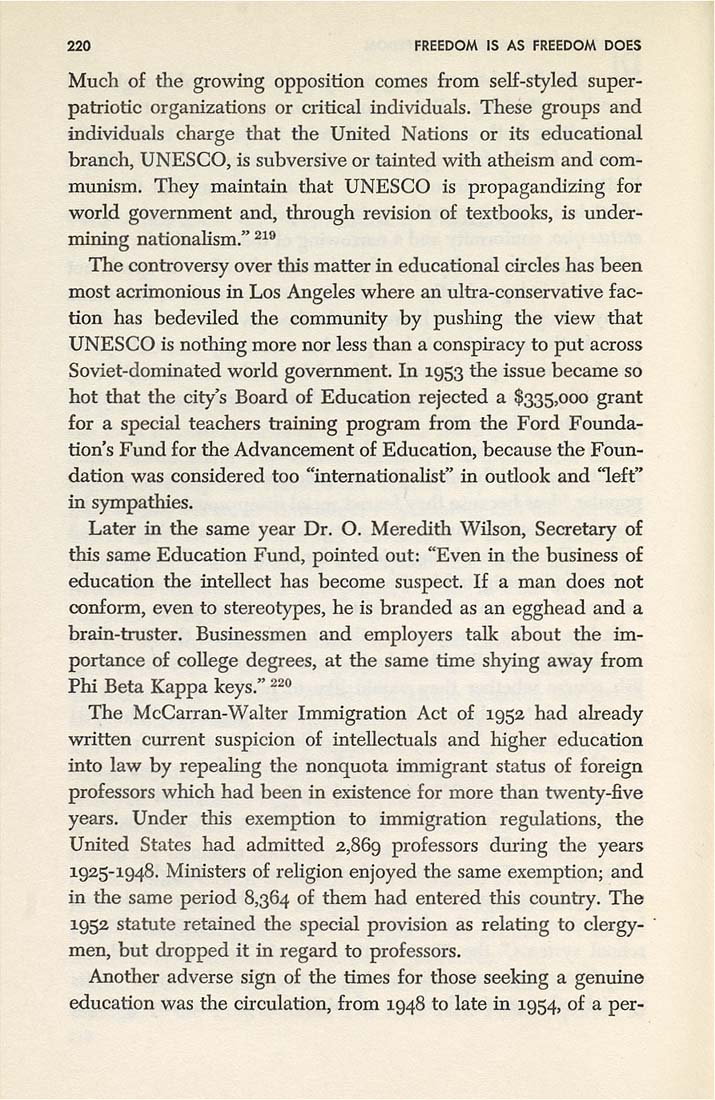220 FREEDOM IS AS FREEDOM DOES
Much of the growing opposition comes from self-styled super-
patriotic organizations or critical individuals. These groups and
individuals charge that the United Nations or its educational
branch, UNESCO, is subversive or tainted with atheism and com¬
munism. They maintain that UNESCO is propagandizing for
world government and, through revision of textbooks, is under¬
mining nationahsm." ^^^
The contioversy over this matter in educational circles has been
most acrimonious in Los Angeles where an ultia-conservative fac¬
tion has bedeviled the community by pushing the view that
UNESCO is nothing more nor less than a consphacy to put across
Soviet-dominated world government. In 1953 the issue became so
hot that the city's Board of Education rejected a $335,000 grant
for a special teachers tiaining program from the Ford Formda-
tion's Fund for the Advancement of Education, because the Foun¬
dation was considered too "internationaHst" in outiook and "left"
in sympathies.
Later in the same year Dr. O. Meredith Wflson, Secretary of
this same Education Fund, pointed out: "Even in the business of
education the intellect has become suspect. If a man does not
conform, even to stereotypes, he is branded as an egghead and a
brain-truster. Businessmen and employers talk about the im¬
portance of coflege degrees, at the same time shying away from
Phi Beta Kappa keys." ^^o
The MeCarran-Walter Immigration Act of 1952 had already
written current suspicion of inteflectuals and higher education
into law by repealing the nonquota immigrant status of foreign
professors which had been in existence for more than twenty-five
years. Under this exemption to immigration regulations, the
United States had admitted 2,869 professors during the years
1925-1948. Ministers of rehgion enjoyed the same exemption; and
in the same period 8,364 of them had entered this countiy. The
1952 statute retained the special provision as relating to clergy¬
men, but dropped it in regard to professors.
Another adverse sign of the times for those seeking a genuine
education was the circulation, from 1948 to late in 1954, of a per-
|








